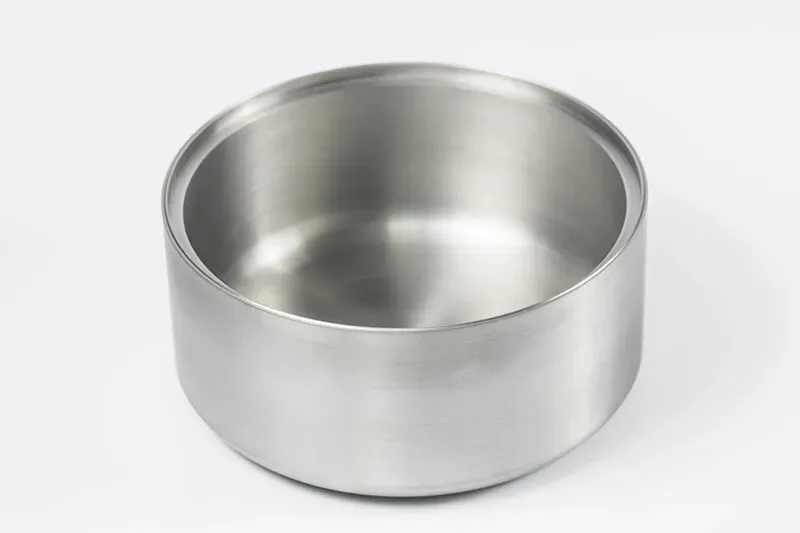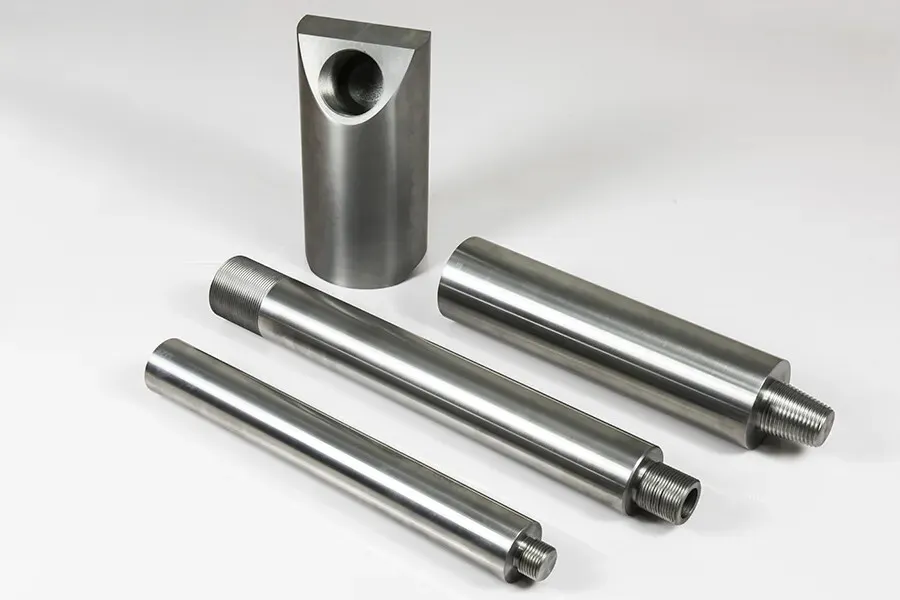Molybdenum is a unique refractory metal known for its high melting point, excellent thermal conductivity, and low thermal expansion, making it ideal for demanding applications in aerospace, electronics, medical devices, and high-temperature furnaces. Customizing molybdenum parts typically involves a combination of machining, fabrication, and finishing techniques.

While pure molybdenum is common, specific applications may benefit from its alloys. These include:
TZM (Titanium-Zirconium-Molybdenum): Offers improved high-temperature strength and creep resistance compared to pure molybdenum.
Mo-La (Molybdenum-Lanthanum Oxide): Provides enhanced ductility and machinability, often used for heating elements.
MHC (Molybdenum-Hafnium-Carbon): Offers enhanced high-temperature strength and stability.
Mo-Cu (Molybdenum-Copper): Provides improved thermal conductivity and strength, good for heat sinks and electrical contacts.
Molybdenum is considered machinable, although it can be challenging due to its hardness and specific material properties. Precision machining is crucial for achieving tight tolerances and complex geometries. Common machining methods include:
CNC Machining: This is the most prevalent method for custom molybdenum parts, offering high accuracy and consistency.
CNC Milling: Utilizes rotating cutting tools to remove material and create intricate shapes, including 3-axis, 4-axis, and 5-axis options for complex geometries.
CNC Turning: Used for producing cylindrical components by rotating the workpiece against a stationary cutting tool.
CNC Drilling: Creates precise holes using specialized carbide or high-speed steel drills.
Wire EDM (Electrical Discharge Machining): A non-contact process that uses a thin, electrically charged wire to cut through conductive materials. It's excellent for intricate designs, delicate parts, and achieving tight tolerances, especially when complex geometries are required.
Grinding: Used to achieve smooth, flat, and precise surfaces. It's important to use sharply dressed wheels and ample coolant to prevent localized overheating and cracking.
Tapping & Threading: For creating threaded holes or custom threads. Coarse threads are generally preferred over fine threads. For roll threading, heating the molybdenum to around 300°F (150°C) is recommended.
Special Machining Methods:
Laser Cutting: Precisely cuts molybdenum sheets with minimal heat-affected zones, especially suitable for thin sheets and intricate patterns.
Electron-beam machining: Applicable for very small holes (7 to 1000 microns in diameter).
Micro-machining: Can create extremely small holes using virtual electrodes.
Beyond machining, other fabrication methods are used to form and assemble molybdenum parts:
Metal Forming (Bending, Folding, Punching, Stamping): Molybdenum can be formed, but heavier sections may require heating (e.g., 400-1000°F or 200-540°C) to prevent drag or cracking, especially for shearing.
Welding, Soldering, Brazing: While challenging due to molybdenum's brittleness and susceptibility to cracking during cooling, inert gas welding (e.g., with argon or helium) in the presence of a heat-decomposable hydrocarbon can produce crack-free butt welds.
Riveting: Another method for joining molybdenum components.
Complex Assembly: Combining various fabricated and machined molybdenum components into a complete assembly.
Powder Metallurgy: Molybdenum is often produced through powder metallurgy processes where raw material powders are pressed and sintered. This allows for specific initial forms before further machining or fabrication.
To enhance performance, appearance, or corrosion resistance, several surface finishes can be applied:
As Machined: The part retains tool marks from the machining process.
Bead Blasted: Creates a uniform matte or satin finish by blasting abrasive beads, removing tool marks and minor imperfections.
Electropolishing: A chemical process that removes a thin layer of material, reducing roughness and creating a bright, smooth surface, also improving corrosion resistance.
Chemical Etching: Creates a matte finish and can improve surface adhesion for subsequent coatings.
Passivation: A chemical treatment that removes contaminants and enhances the natural oxide layer, improving corrosion resistance.
Black Oxide Coating: A conversion coating for mild corrosion resistance and a black matte finish, primarily decorative.
Powder Coating: A durable, protective, and aesthetic coating applied electrostatically and cured with heat.
PVD (Physical Vapor Deposition) and CVD (Chemical Vapor Deposition): Advanced coating techniques to improve surface properties.

Define Your Requirements:
Dimensions and Shape: Provide detailed drawings or CAD models.
Tolerances: Specify the allowable deviations in dimensions.
Material Purity: Indicate the desired purity of the molybdenum or specific alloy (e.g., pure Mo, TZM, Mo-La).
Quantity: Specify the number of parts needed (for prototyping, small batch, or high-volume production).
Application: Describe the intended use of the part, as this helps manufacturers recommend suitable processes and finishes.
Surface Finish: Specify any required surface treatments.
Molybdenum machining and fabrication require specialized expertise and equipment. Look for manufacturers with:
Experience in refractory metals like molybdenum.
Advanced CNC machining capabilities (multi-axis milling, turning).
Wire EDM capabilities.
Quality assurance certifications (e.g., ISO9001, AS9100).
The ability to work with various molybdenum alloys.
By clearly communicating your specifications to a qualified manufacturer, you can ensure that your custom molybdenum parts meet your exact performance and design needs.
Share this page
If you have any product needs or questions, please leave us a message for consultation.
TEL: 86-18623759992
jason@bettmetal.com
Innovating Materials
for a Brighter Future